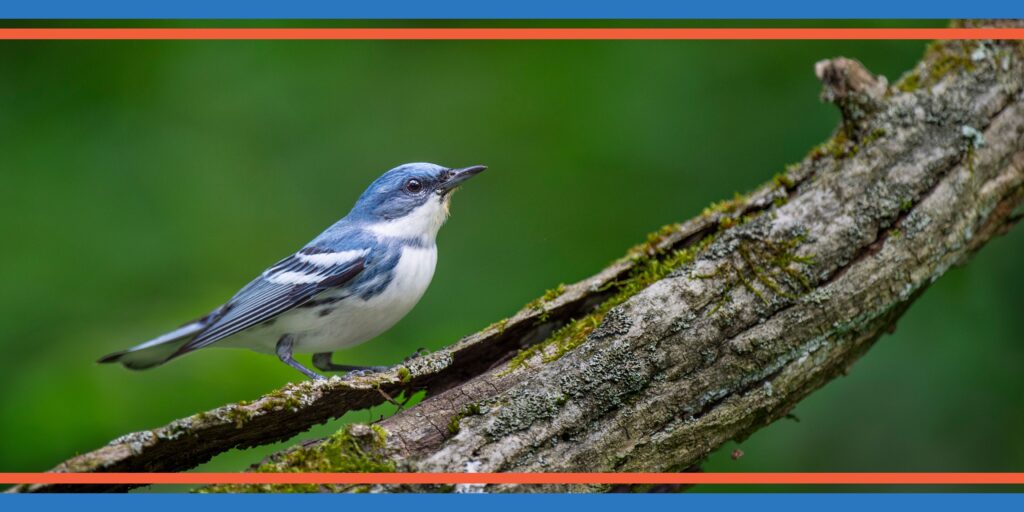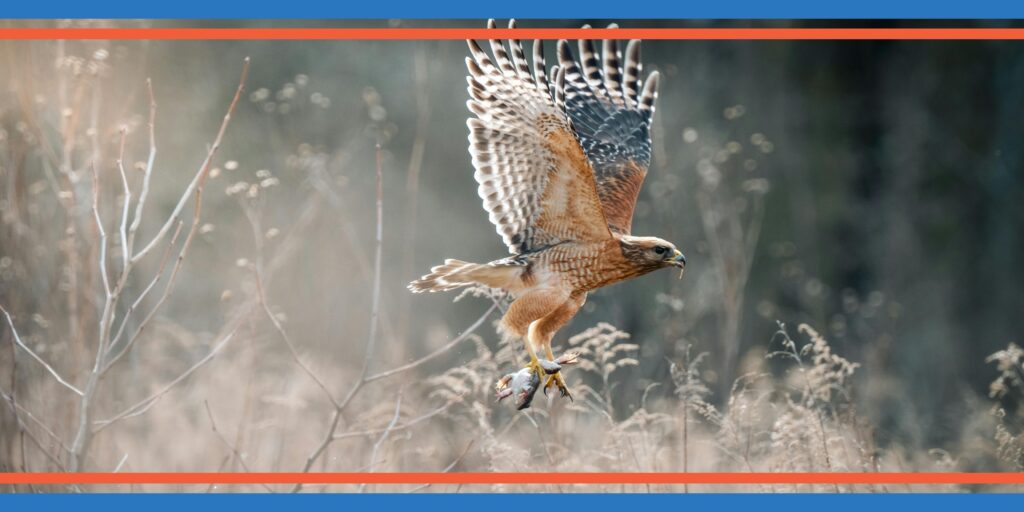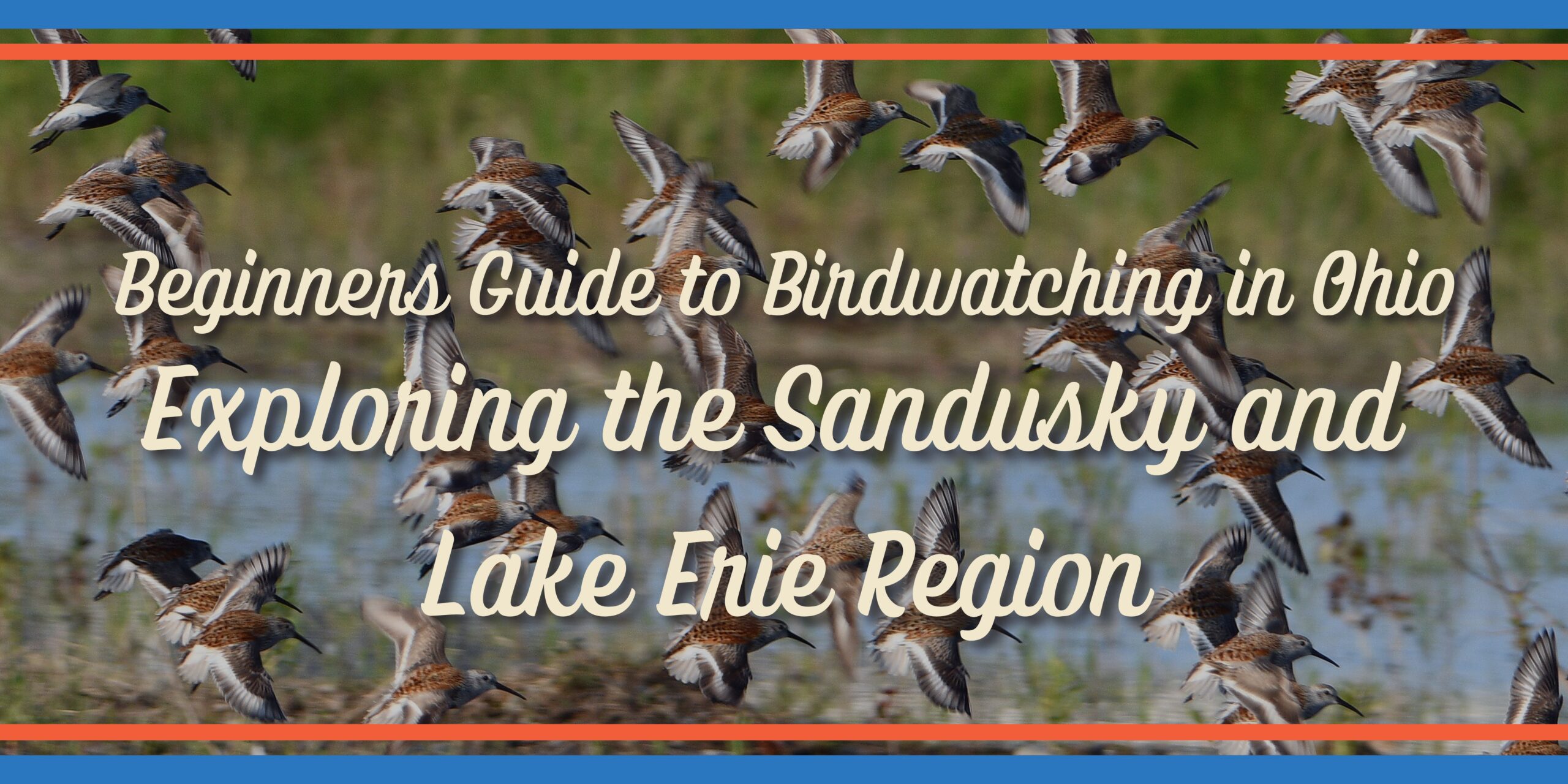Ohio might not be the first place that comes to mind for birdwatching, but it should be! With its diverse habitats ranging from the shores of Lake Erie to woodlands and marshes, Ohio offers some of the most spectacular birding opportunities in the Midwest. For beginners looking to start their birding journey, the Sandusky and Lake Erie region is a perfect launching point.
This area serves as a critical stopover for hundreds of migratory species, with a remarkable 453 bird species recorded in Ohio as of 2025. Whether you’re hoping to spot colorful warblers during spring migration or waterfowl in the fall, birdwatching in Ohio offers year-round excitement for nature enthusiasts of all levels.
In this guide, we’ll walk you through everything you need to know to begin your birding adventure in the Sandusky area, from essential equipment to the best locations and seasons for spotting diverse bird species.
What is Birdwatching?
Birdwatching, or “birding” as enthusiasts often call it, is simply the activity of observing birds in their natural habitats. It’s more than just spotting birds; it’s about appreciating their behaviors, songs, and the environments they inhabit. For beginners, birdwatching might start with identifying common backyard visitors like Northern Cardinals or Blue Jays, then gradually expand to seeking out less common species in various habitats.
Think of birdwatching as a treasure hunt. Sometimes you’ll spot a brilliant red cardinal against winter snow, while other times you might witness the spectacle of thousands of waterfowl taking flight from Lake Erie’s marshes at dawn.
Why Birdwatching in Ohio Matters

Ohio’s geographic position makes it incredibly important for bird conservation and observation. The state sits along major migratory flyways, with Lake Erie serving as a crucial rest stop for birds traveling between their breeding and wintering grounds. Approximately 180 species breed in Ohio annually, while hundreds more pass through during migration.
The Sandusky Bay region specifically is recognized by the Western Hemisphere Shorebird Reserve Network as a regionally significant migration staging area. This means birders in this area have opportunities to witness continental-scale bird movements that are increasingly threatened by habitat loss.
For new birders, Ohio’s diversity offers an excellent classroom for developing identification skills. From common backyard birds to rare migrants, the variety helps beginners build confidence while experiencing the thrill of discovery that keeps veteran birders coming back year after year.
How to Get Started with Birdwatching in Ohio
Step 1: Gather the Right Equipment
While you can start birdwatching with just your eyes, a few basic tools will greatly enhance your experience:
- Binoculars: The most essential piece of equipment. For beginners, look for binoculars with 8×42 magnification, which provides a good balance of magnification and field of view. Brands like Nikon, Vortex, and Celestron offer quality starter options between $100-200.
- Field Guide: A good field guide helps with identification. The “Sibley Field Guide to Birds of Eastern North America” or the “National Geographic Field Guide to the Birds of North America” are excellent choices. Digital alternatives include the free Merlin Bird ID app from Cornell Lab of Ornithology.
- Notebook: Recording your observations helps track your progress and remember what you’ve seen. Note the date, location, weather conditions, and any interesting behaviors.
- Comfortable Clothing: Dress in layers and neutral colors. Waterproof footwear is essential for exploring the marshes around Sandusky.
Step 2: Learn the Basics of Bird Identification

Before heading out, familiarize yourself with the basics of bird identification:
- Size and Shape: Is the bird robin-sized or crow-sized? Is it plump or slender?
- Color Pattern: Note the main colors and where they appear on the bird.
- Behavior: Is it foraging on the ground or high in trees? Does it wade in water?
- Habitat: Different birds prefer different environments.
- Sound: Learning bird calls takes time, but greatly enhances identification skills.
Start with the top 10 most common Ohio birds: Northern Cardinal, Blue Jay, American Robin, Mourning Dove, American Goldfinch, Song Sparrow, Red-winged Blackbird, Carolina Chickadee, Red-bellied Woodpecker, and Tufted Titmouse.
Step 3: Explore Prime Birding Locations in Sandusky/Lake Erie Region
The Sandusky area offers several world-class birding locations:
- Magee Marsh Wildlife Area: Known as “the warbler capital of the world,” this is a must-visit during spring migration. The boardwalk allows close observation of warblers and other migrants. The Black Swamp Bird Observatory at the entrance provides information and guidance.
- Metzger Marsh Wildlife Area: Excellent for spotting waders, ducks, and shorebirds like American Coots, Blue-winged Teals, Common Gallinule, Yellowlegs, and Great White Egrets.
- Pickerel Creek Wildlife Area: Part of the Sandusky Bay Loop, this area is renowned for waterfowl, especially during migration when American Black Ducks are abundant.
- Pipe Creek Wildlife Area: Another Sandusky Bay hotspot offering diverse habitats and bird species.
- Resthaven Wildlife Area: A premier hotspot within the Sandusky Bay Loop, featuring some of the best remaining tracts of the historical Castalia Prairie. In mid-May, thousands of endangered white lady’s-slipper orchids bloom here, adding to the natural beauty.
- Maumee Bay State Park: Great for spotting Red-winged Blackbirds and, in spring and summer, learning about warblers and migrating birds, including Bald Eagles and Cooper’s Hawks.
Step 4: Time Your Visits for Maximum Bird Diversity

Timing is crucial for successful birding in Ohio:
- Spring Migration (Mid-February to Mid-June): This is the peak season, with May being the absolute highlight when Neotropical migrants arrive in waves. During the Biggest Week in American Birding festival in May, you might spot over 27 species of warblers in a single day!
- Summer (June-August): While migration slows during this period, it is the breeding season, so many birds are raising young and are more vocal and visible.
- Fall Migration (August-December): Fall shorebird migration peaks between mid-July and early October. Waterfowl concentrate from August through December.
- Winter (December-February): While species diversity decreases, winter specialties like Snowy Owls, Northern Shrikes, and various waterfowl can be observed along Lake Erie.
Common Mistakes to Avoid
- Moving too quickly: Birds are sensitive to movement. Walk slowly and pause frequently.
- Being too loud: Keep conversations quiet and silence your phone.
- Forgetting to check the weather: Spring in Ohio can be unpredictable. Always check the forecast and dress accordingly.
- Ignoring ethics: Never disturb nesting birds or use playback calls excessively. Follow the American Birding Association’s Code of Ethics.
- Getting discouraged: Even experienced birders miss identifications. Birding is a lifelong learning process. Enjoy the journey!
Examples of Birding in Action: What to Look For in Sandusky and the Lake Erie Region

Warblers
During spring migration, the Sandusky region becomes a warbler hotspot. Look for the bright yellow of Yellow Warblers (early migrants) or the distinctive black-and-white striped Blackpoll Warblers. If you’re extremely lucky, you might spot the rare Kirtland’s Warbler with its yellow breast and bluish-gray back.
Waterfowl
Over 30 species of waterfowl can be seen along Lake Erie. American Black Ducks are particularly numerous during migration. Look for the distinctive green head of male Mallards or the elegant silhouette of Great Blue Herons wading in shallow waters.
Shorebirds
Seven migrant species are particularly important in Ohio: Greater and Lesser Yellowlegs, Least Sandpiper, Pectoral Sandpiper, Dunlin, and Short-billed and Long-billed Dowitchers. July is an excellent time to observe fall shorebird migration.
Raptors
The Red-tailed Hawk is one of the most common hawks in Ohio, often seen perched on roadside poles. Bald Eagles have made a remarkable comeback and can be spotted around Lake Erie, particularly near Sandusky Bay.
Additional Resources for Birding in Ohio
- Local Groups: Join the Firelands Audubon Society, which serves Erie and Huron counties and offers field trips, talks, and workshops.
- Online Resources: Websites like eBird allow you to see what birds others are spotting in real-time and record your own sightings.
- Visitor Centers: The Black Swamp Bird Observatory near Magee Marsh provides information, guided walks, and educational programs.
- Apps: Besides Merlin Bird ID, apps like Birda offer AI photo identification and tips from a global community of birdwatchers
Closing
Birdwatching in Ohio, particularly in the Sandusky and Lake Erie region, offers beginners an incredible opportunity to witness the diversity and beauty of bird life. From the spectacular warbler migration in spring to the waterfowl gatherings of fall and winter, there’s always something to see. Remember that patience is key. Sometimes the most rewarding sightings come after spending a bit of time quietly observing.
Start in your backyard or local park to build confidence, then venture to the hotspots mentioned in this guide. Each birding trip will bring discoveries and deepen your connection to the natural world. The Sandusky Bay area’s remarkable concentration of birds makes it one of the Midwest’s premier birding destinations, and it’s waiting for you to explore.
Your Birding Base Camp

Make the most of your birding adventure by staying at Explorer Rest & Recreation. Conveniently located in Sandusky, this boutique motel offers comfortable accommodations with convenient access to the region’s best birding hotspots. After a day of exploration, you’ll appreciate returning to a cozy room where you can review your field notes and plan the next day’s birding excursion. Book your stay today and turn your birding trip into an unforgettable experience!
Justin is an entrepreneur, land development strategist, and hospitality industry expert with over 20 years of experience owning and operating award-winning properties. In ownership, executive and advisory roles, he has masterminded strategies and operational processes for a wide range of businesses—from startups, challenger brands, and emerging companies, to Fortune 500 brands. He has completed thousands of property walkthroughs, developing a knack for market data and analysis. This enables him to provide the most comprehensive forensic study of any real estate asset, helping site owners quickly secure financial loans on a purchase or a renovation project. His areas of expertise: land development strategy, financial P&L forecasting, and operational efficiency.



